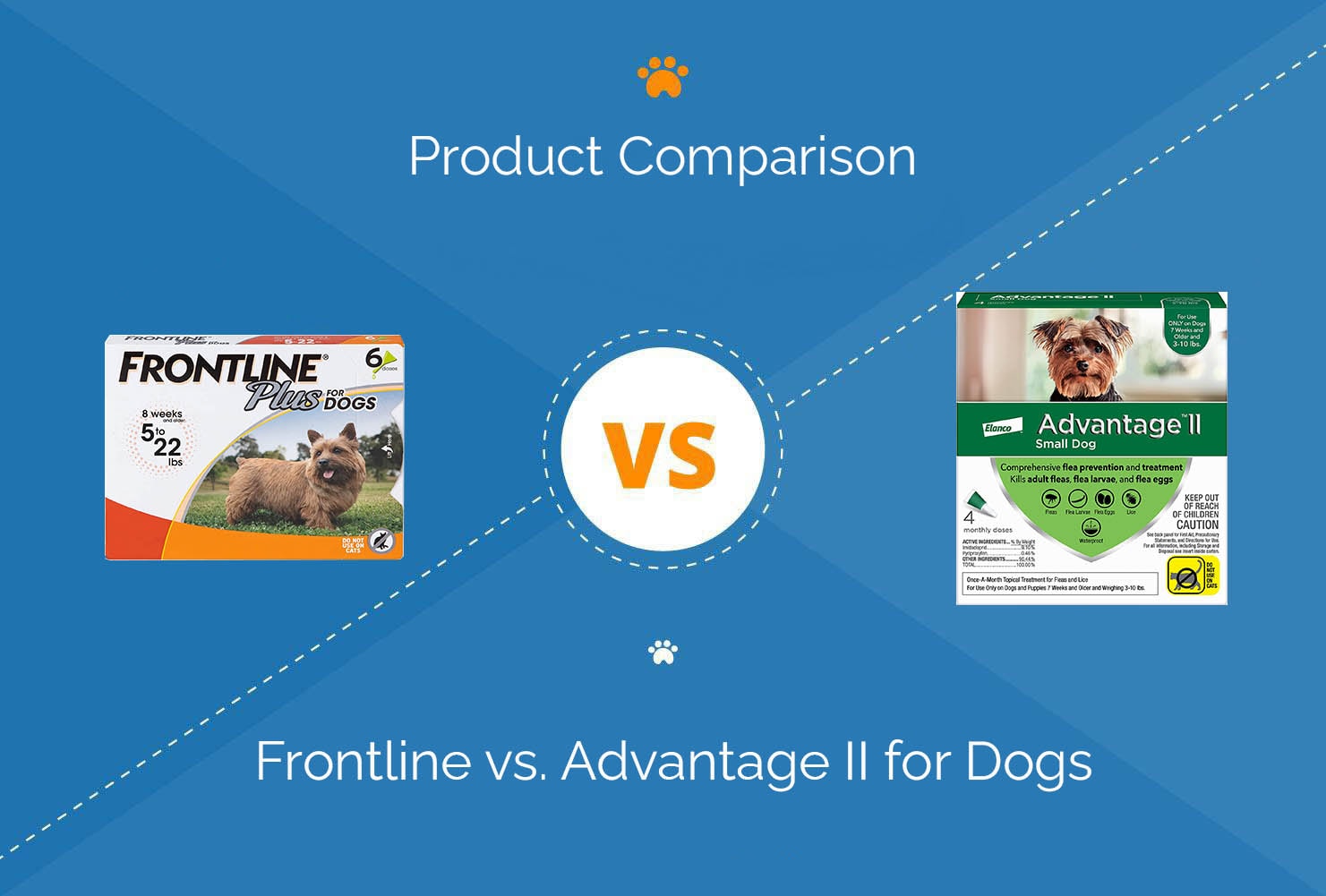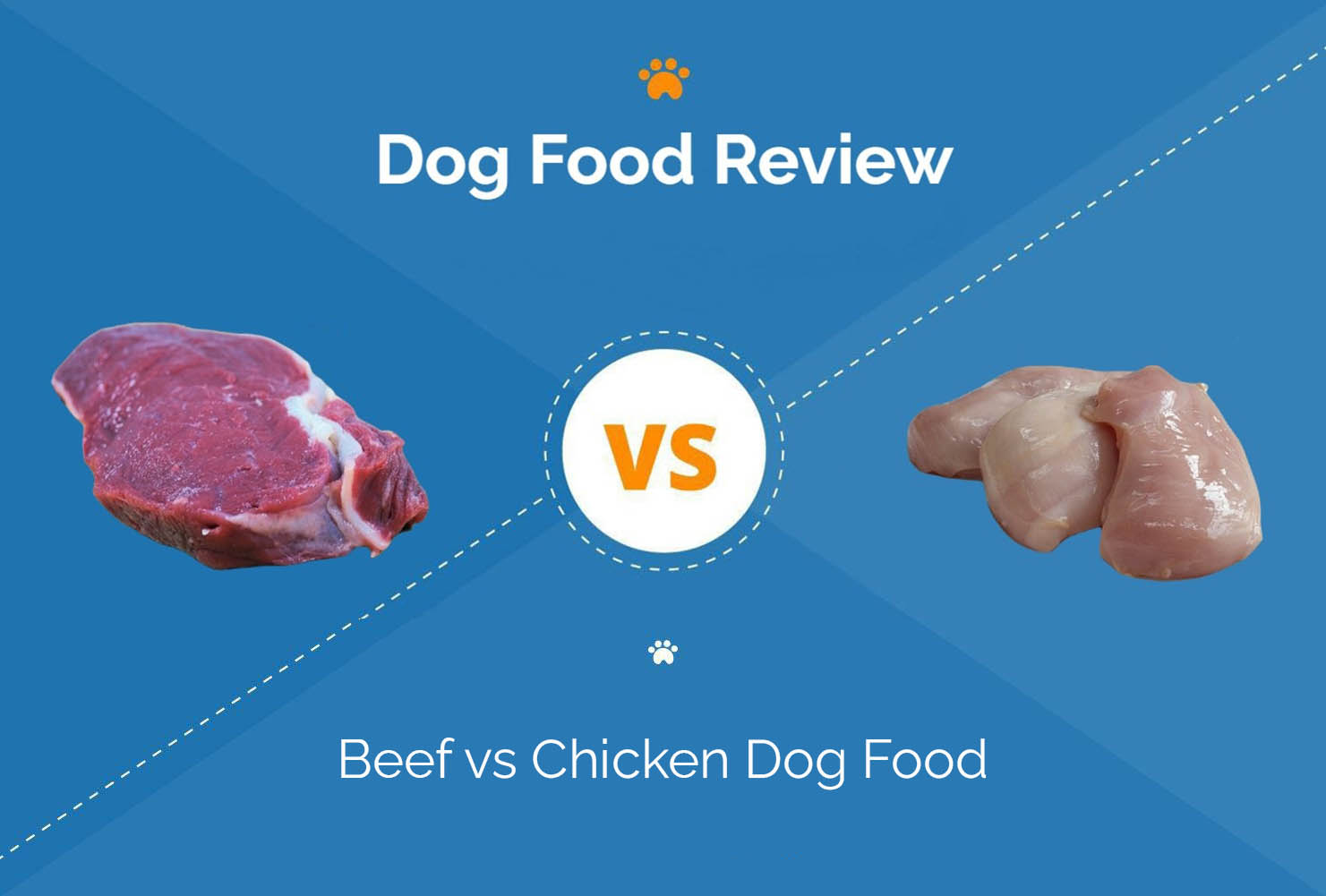How Far Away Can a Dog Smell a Coyote? 4 Signs That He Detected One
By Ed Malaker
Updated on
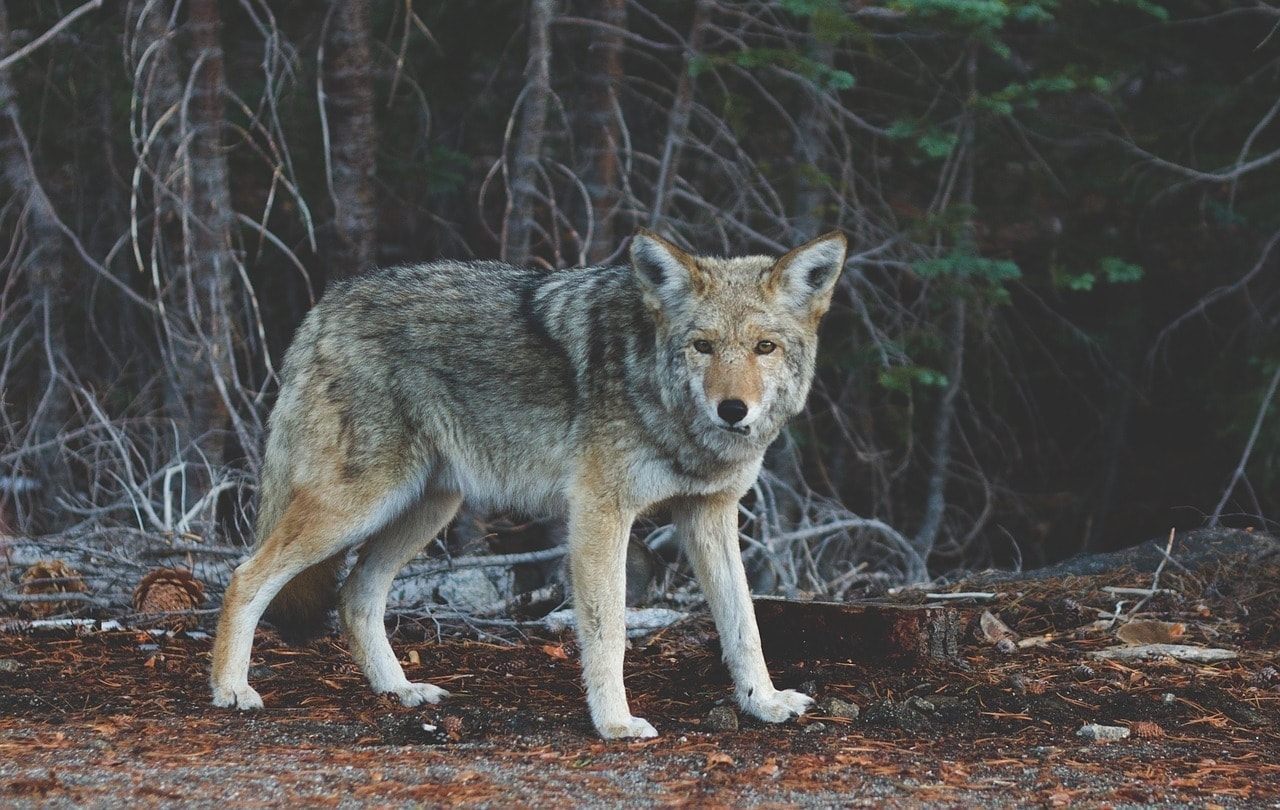
Coyotes and dogs are similar and have the same ancestors. However, the coyote is a wild animal that spends its entire life scavenging and hunting for food, so it can be quite dangerous to your pet. Most owners notice that their dog starts to act strangely if coyotes are near and wonder how far away the coyotes might be. The short answer is, that dogs may small a coyote up to 12 miles away. Keep reading as we explain how far away a dog can smell, as well as the warning signs that a dog might display if a coyote is around.
How Far Can My Dog Smell?
A dog’s nose is much more sensitive than a human’s nose and can smell things from a greater distance. Dogs can also detect things that humans can’t, like pheromones. These are chemicals from other animals that help identify that animal, especially those of the same species. Some experts suggest that a dog can smell an object more than 12 miles away, but several factors can reduce that distance significantly.
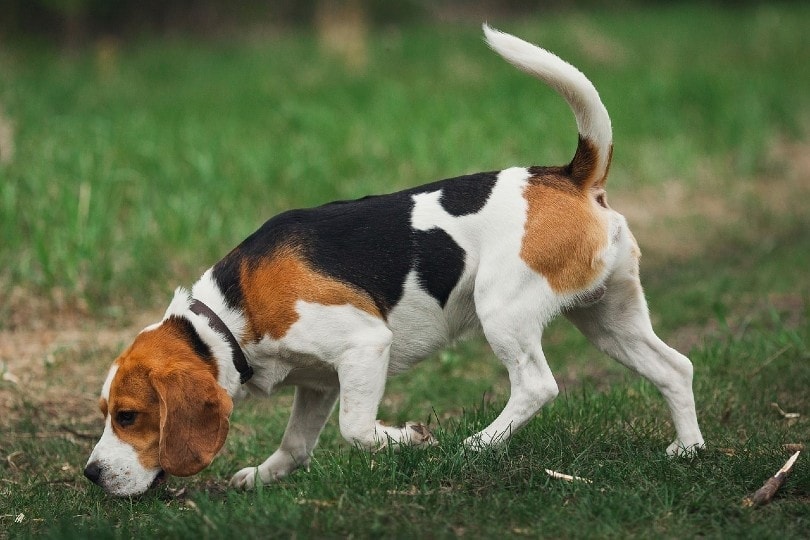
Breed
While every dog has a sense of smell many times better than any human, some breeds have better noses than others. Hound dog breeds, like the Greyhound, Dachshund, and Basset Hound, have the best noses, followed by working dogs like the German Shepherd and the Labrador. Dog breeds with scrunched-in faces, like the Pug and Bulldog, may have more difficulty smelling because the cramped air passages can make it more difficult for a fragrance to get through.
Wind
Wind is one of the biggest factors affecting how far away your dog can smell. It can move the scent away from the object, making it hard to determine direction. Heavy winds that continue over time can also wear away dirt and light, sandy gravel, making it more difficult for the dog to follow a scent track over a long distance.
Rain
Rain can greatly impact your dog’s ability to smell a coyote. The water can bring down fragrance molecules, reducing the distance that they can travel in the air. Moderate or heavy rain can also deteriorate soil and wash away tracks, making it impossible for your dog to follow.
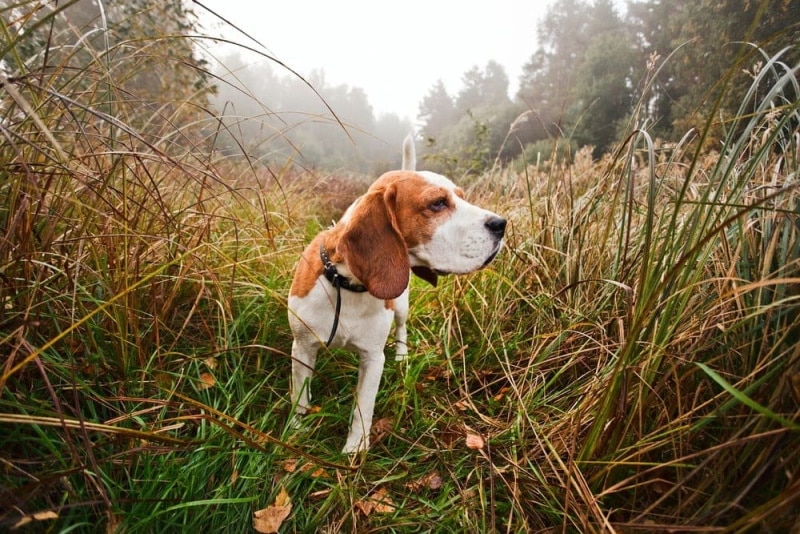
Humidity
Your dog’s nose can detect a scent better in a humid environment, and they will struggle to detect a fragrance as the air becomes drier, reducing their ability to track a scent over a long distance.
Humans and Other Animals
Another thing that can disrupt a dog’s ability to follow a scent is a human or another animal in the way. Automobiles, deodorants, perfume, and even the scent of laundry detergent can be quite strong to a dog, easily overpowering other fragrances. Other animals digging or following a similar path as the first animal can also confuse a dog.
Training
A great way to help your dog detect coyotes is to train them. Scent training can help your dog notice a smell that they might otherwise ignore, so their first encounter with a coyote won’t take them by surprise.
The 4 Signs That Your Dog Detects a Coyote
1. Restlessness
In many cases, when your dog detects a coyote or any other dangerous animal getting close, they can become restless. You will likely notice them looking around more often and sniffing the ground, likely in an attempt to determine the direction of the danger.
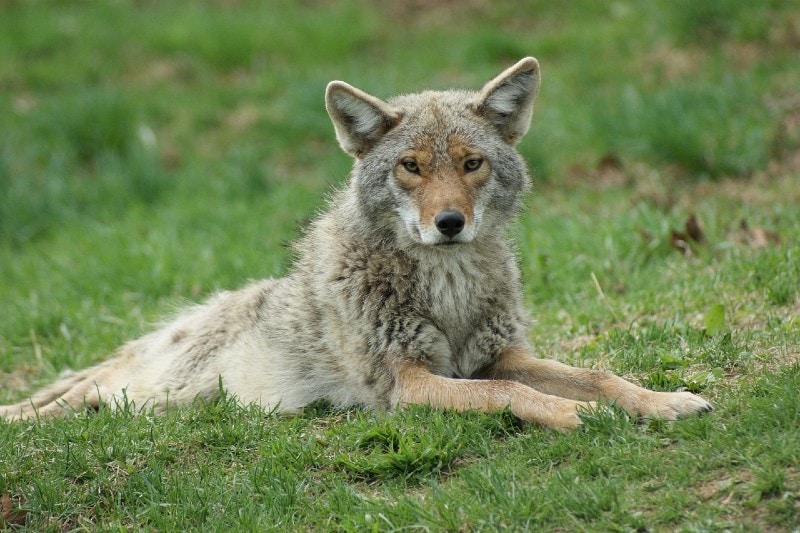
2. Listening and Howling
If a coyote remains in detectable range for a while, you will likely notice your dog listening intently. Your dog may also start to howl, especially at night or if they feel isolated.
3. Growling and Whining
If your dog detects imminent danger, they will likely become aggressive and growl. They may start to bark loudly and be less interested in obeying your commands or paying attention to their usual activities. If your dog is frightened or detects several coyotes, they can also start whining and whimpering. As the dog becomes more nervous, they might also start digging or engaging in other strange behavior, like pacing.
4. Begging to Come Inside
Another thing that many outdoor dogs do when a coyote gets close is begging to come inside. Since most dogs enjoy spending time outside, begging to come in is a sure sign that something is wrong.
How Can I Keep My Dog Safe From Coyotes?
- Always bring your dog into the house if they show signs that they detect another animal.
- Train your dog to smell coyotes and notify you when they do.
- Keep your dog on a leash in coyote territory, so your pet doesn’t run off and engage one.
- Don’t walk your dog in areas with thick brush.
- Avoid walking your dog at sunrise or sunset, when coyotes are most active.
- Remember that a coyote can also smell and track animals from many miles away.
- Never keep your pet tied outside where they might not be able to escape danger.
- Consider using the coyote vest for your dog.
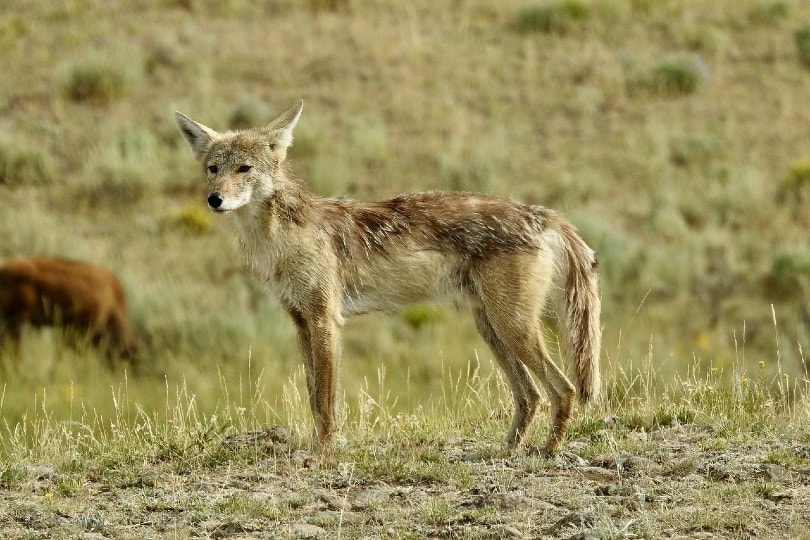
Other Interesting Facts About a Dog’s Nose
- Your dog can breathe in and out simultaneously, enabling them to breathe while sniffing.
- Your dog smells in 3D, which enables them to detect the distance and direction of a fragrance.
- When your dog follows a track on the ground, they know how long it’s been there because their nose can detect the tiny reduction in the concentration of older scent molecules at the site.
Summary
Under ideal conditions, your dog can smell an object more than 12 miles away. Breed, weather, and human and animal activity can reduce that distance, but your dog should have no trouble detecting a coyote that’s in range, especially if you have trained your dog to know what a coyote is. Bring your dog in if you notice that they are getting restless or are barking and howling in the woods, especially at sunrise and sunset when coyotes are most active.
Featured Image Credit: Marvelous Art, Shutterstock




